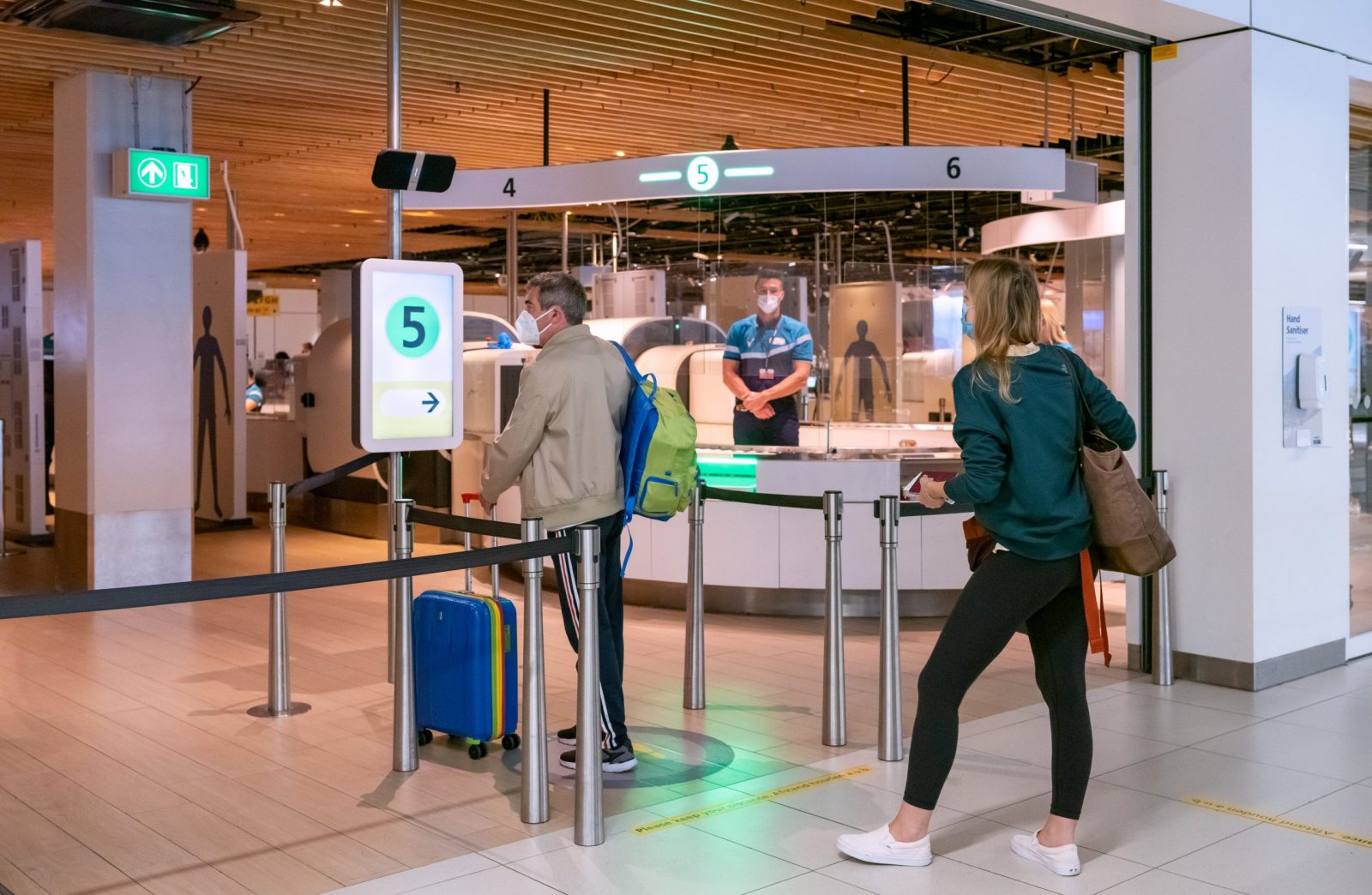
The European Union is following the lead of the United Kingdom by reintroducing liquid limits for passengers at airports that have installed next-generation CT scanners, which were meant to allow passengers to pass through airport security checkpoints with ease.
Airports across Europe have been rushing to install Computed Tomography (CT) scanners in a bid to end the loathed 100ml liquid limit that was hurriedly introduced more than 17 years ago following the failed 2006 transatlantic liquid bomb plot.
CT scanners are meant to eliminate the need for passengers to unpack liquids and electronic items from their luggage at the security checkpoint by creating a 3-D image that is analysed by sophisticated algorithms to detect weapons, explosives, and other prohibited items, including liquid explosives.
It turns out, however, that the software in these CT scanners aren’t working nearly as effectively as envisioned, resulting in more bags requiring secondary hand searches than the X-ray baggage scanners that they are replacing.
In June, the British government suddenly reimposed liquid restrictions at airports that had rolled out CT scanners after initially ordering airports to install the cutting edge technology as quickly as possible in attempt to lift the liquid restrictions rule.
At the time, the UK was the only country to raise concerns with the reliability of the CT scanners, but now the European Union has also decided to reimpose liquid restrictions at airports across the bloc, as well as Iceland, Switzerland, Liechtenstein, and Norway.
The new rules will come into force from September 1 – an attempt by European regulators to give airports an opportunity to bring in more security staff to handle the extra workload.
In an updated EU-wide regulation, regulators say they have received technical information shows that the way CT scanners have been configured need to be “revised in order to improve performance”.
The regulation continues: “As a precautionary measure, in order to maintain the security of air travel, a limitation to the maximum volume of individual LAG [liquid, aerosol, gas] containers that can be screened by any of the currently approved C3 EDSCBG [explosive detection systems for cabin baggage] equipment configurations should be introduced”.
Unlike the previous liquid rules that applied to older X-ray machines, passengers won’t have to keep all their liquids in a single, see-through and sealable bag, but liquids in containers over 100ml will be rejected and confiscated.
The trade body that represents airports across Europe has warned that the new regulations will cause “significant operational strain” and that airports that have invested millions of Euros to deploy the new scanners are being “heavily penalised”.
“Airports which have been early adopters of this new technology are being heavily penalised both operationally and financially,” commented Oliver Jankovec, director general of Airports Council International EUROPE, which claims CT scanners cost around 8 times more than standard X-ray screening equipment.
“The decision to now impose significant restrictions to their use questions the trust and confidence the industry can place in the current EU certification system for aviation security equipment,” Jankovec continued.
Just like in the United Kingdom, the EU also says that the new rules are only temporary, although there’s no timeline for when the necessary software updates will be made and how long the liquid restrictions will remain in force.
Related
Mateusz Maszczynski honed his skills as an international flight attendant at the most prominent airline in the Middle East and has been flying ever since... most recently for a well known European airline. Matt is passionate about the aviation industry and has become an expert in passenger experience and human-centric stories. Always keeping an ear close to the ground, Matt's industry insights, analysis and news coverage is frequently relied upon by some of the biggest names in journalism.








Are the machines unreliable or is it that the machines are actually reliable but that their use slows things down at the screening checkpoints because people are people and bags come in a variety and get packed like they do in this environment where what passengers are allowed at one screening checkpoint is different than what they are allowed at a different screening checkpoint or even a different screening checkpoint lane at the same checkpoint? It’s the latter, which is why they didn’t put a complete and immediate halt to use of these machines.
Being 8 times as expensive (as the xray baggage scanners) to buy from the scanner manufacturers is only part of the cost. The machines are so heavy that installation and running them requires extra money for things such as extra close examination of the airport terminal infrastructure and even some rebuilding in order to avoid problematic floor damage such as that related to ceiling or support beam collapse.
This shouldn’t be a sudden surprise. It’s been known publicly since the end of April, following from when the EC was told to pull the approval for the CT cabin baggage scanners but the pushback on the demand was that of needing more time to do that without rocking the boat too much among One-Stop Security partner countries, airports, airlines and passengers by too suddenly pulling the rug out from under the machines approved by the EU. Now that MEP elections are over and there are other distractions around to play up, the EC can get back on the program of kissing up to and for foreign “security” partners. A window into this issue was provided to the public in the latter part of April 2024 can be seen by Commission Decision EU 2024/1177.
You may also want to check out “Commission Decision (EU) 2024/2109 of 29 July 2024 repealing Decision (EU) 2024/1177 on the suspension of the approval of a civil aviation security equipment with EU Stamp marking”.
Which means Implementing Regulation (EU) 2024/2108 is the one getting us back more to the old ways of the “war on water” going on at airport security checkpoints since the days of the GW Bush Admin.